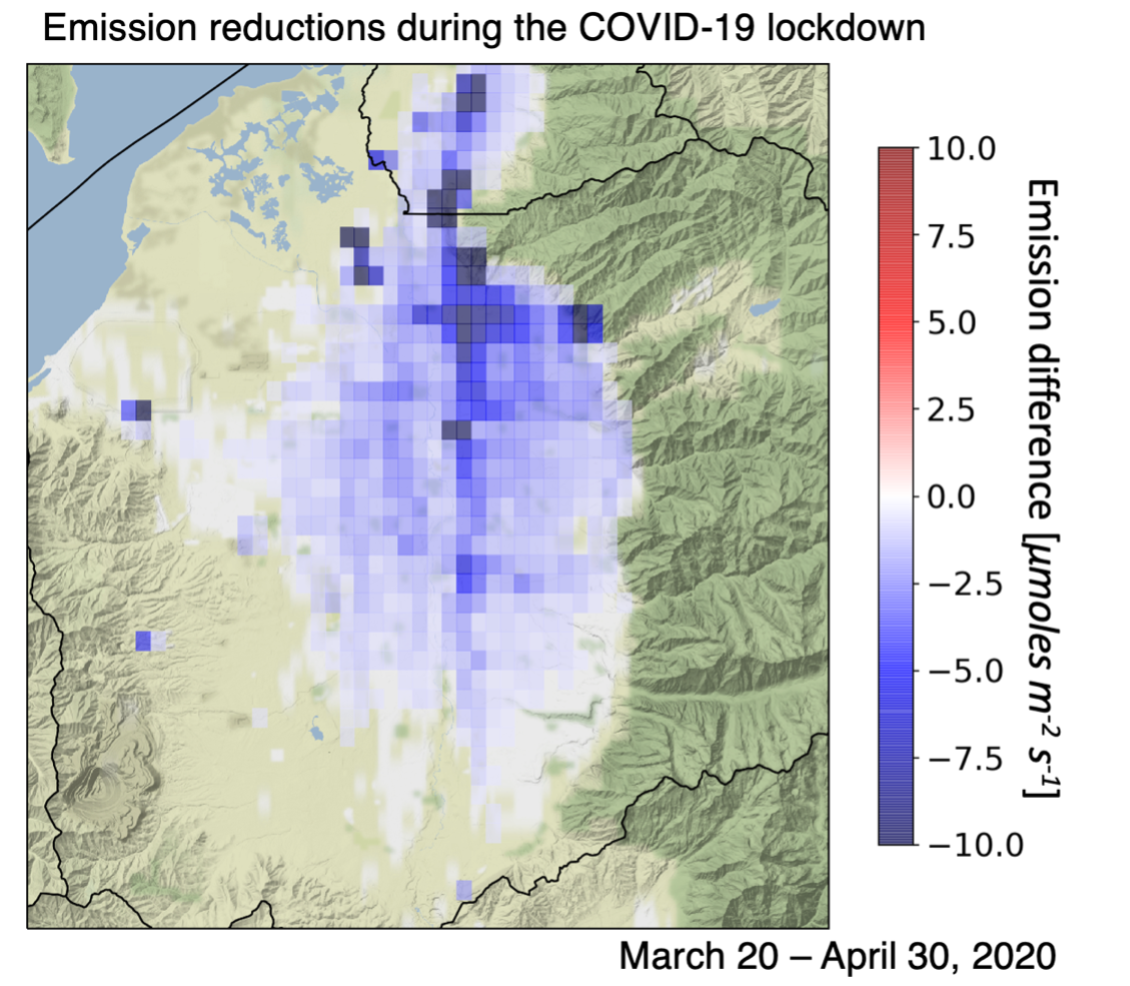Quantifying the Impacts of the COVID-19 Lockdown on Urban Emissions across the Salt Lake Valley
D.V. Mallia, L.E. Mitchell and J.C. Lin
University of Utah, Salt Lake City, UT 84112; 631-827-9170, E-mail: Derek.Mallia@utah.edu
The COVID-19 pandemic resulted in a widespread lockdown during the spring of 2020. The Salt Lake Valley (SLV) observed a large decrease in anthropogenic emissions during the COVID-19 lockdown, which altered the urban atmospheric composition within the valley. Measurements on a light rail system in the Salt Lake Valley (TRAX), combined with observations from the Utah Urban Carbon Dioxide Network (UUCON) suggest that there was a notable decrease in urban greenhouses gases relative to prior years. These decreases were most pronounced in downtown Salt Lake City and areas adjacent to major roadways. During the lockdown, the average traffic volume across the SLV decreased by 35% according to the Utah Department of Transportation. CO2 measurements across the Salt Lake Valley were used within a Bayesian inverse model to spatially allocate the reductions in anthropogenic emissions due to the COVID-19 lockdown. Preliminary results from our inverse analysis suggests that the SLV observed a 20% decrease in urban CO2 from March-April 2020. The largest reductions in CO2 emissions were confined to the northern part of the valley and near major roadways and interstates. Changes in the spatiotemporal patterns of emissions could yield important insights into how anthropogenic emissions impact the atmospheric composition and air quality in and around urban centers.
Figure 1. Changes in anthropogenic CO2 emissions in the Salt Lake Valley during the COVID-19 lockdown between March 20 and April 30, 2020.

